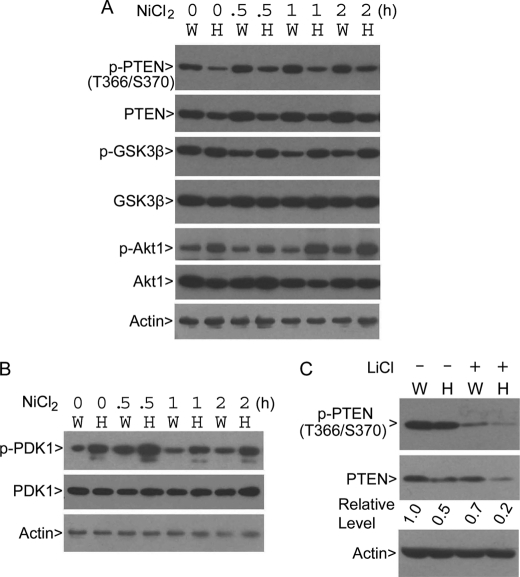FIGURE 5.
Plk3 phosphorylation promotes PTEN stabilization, thereby negatively regulating the PI3K/PDK1/Akt1 signaling axis. A, paired wild-type (W) and PLK3−/− (H) MEFs were treated with the hypoxia mimetic NiCl2 for various times. Equal amounts of cell lysates were blotted for phospho-PTENThr-366/Ser-370, total PTEN, phospho-GSK3βSer-9, total GSK3β, phospho-Akt1Ser-437, total Akt1, and β-actin. B, paired wild-type (W) and PLK3−/− (H) MEFs were treated with NiCl2 for various times. Equal amounts of cell lysates were blotted for phospho-PDK1, total PDK1, and β-actin. C, paired wild-type (W) and PLK3−/− (H) MEFs were treated with or without LiCl for 4 h after which cells were collected for lysate preparation. Equal amounts of cell lysates were blotted with antibodies to phosphorylated PTEN (p-PTENThr-366/Ser-370), total PTEN, and β-actin. The levels of PTEN from each treatment are shown after quantification.

